Buffalo's "Million Dollar Park" - Erie Beach Park, Ontario.
Part 1: 1900-1920
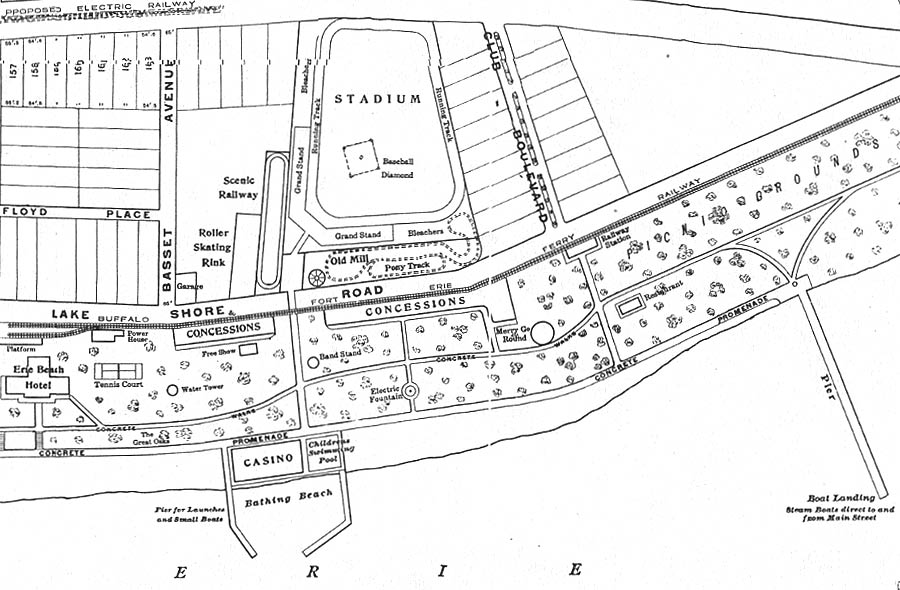
Detail of a map published by the Fort Erie Realty Company in 1910 as a promotion to Americans for the purchase of property in what would become known as Waverly Beach, near Fort Erie, Ontario, Canada.
Fort Erie Beach Park began in the late 1880's when five Buffalonians leased 11 acres along the shore near Fort Erie, Ontario. Their intention was to make money by operating a pleasure grounds and by selling summer home plots to Americans.A fairground and picnic grove already existed on the site called "The Grove," an apt term describing the shaded landscape.
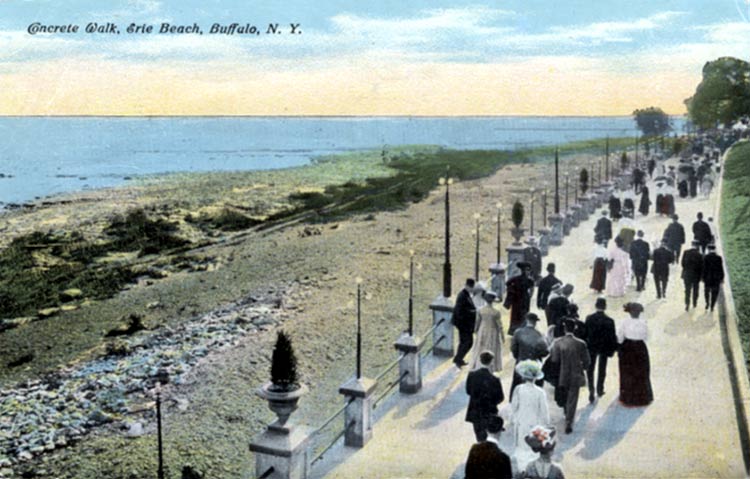
The promenade, an elevated concrete walkway over a mile in length along the lake side of Fort Erie Beach. From this perspective, one can see recently disembarked ferry passengers making their way from the Erie Beach's own ferry pier to the Casino and concessions.

By 1904, the group had purchased the land, set up service by 2 ferries between Buffalo and Fort Erie, and constructed a 3-mile narrow-gauge railroad to transport visitors from the ferry landing to the new Erie Beach Park.
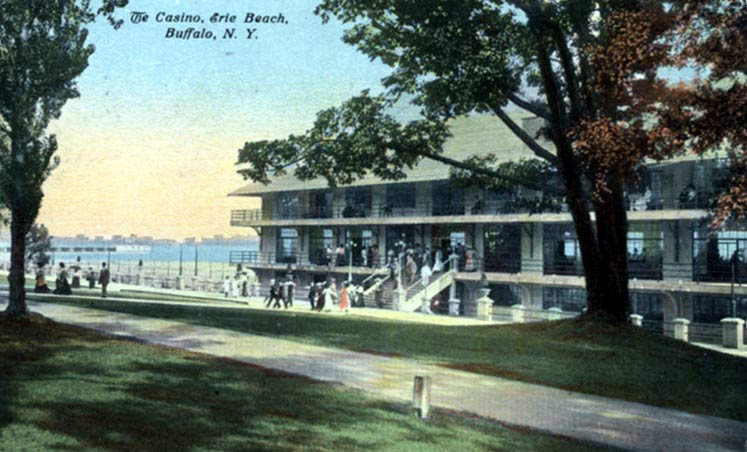
The "Casino," central feature of the park.
The ground floor contained showers and changing rooms for bathers. Swimming costumes were also rented here. The second floor was a dance floor and the third floor contained a restaurant. Note that the 2 postcards above list Fort Erie Beach as located in "Buffalo, NY."
By 1910, the group had secured legal permission to improve the property. They constructed a concrete casino, a 65-room hotel, utitlities including power generation and sewage handling, a stadium and midway attractions. There was no fee to enter theGrounds; the round-trip ferry fee was .25, $.10 for children. Rides were pay-as-you-go.
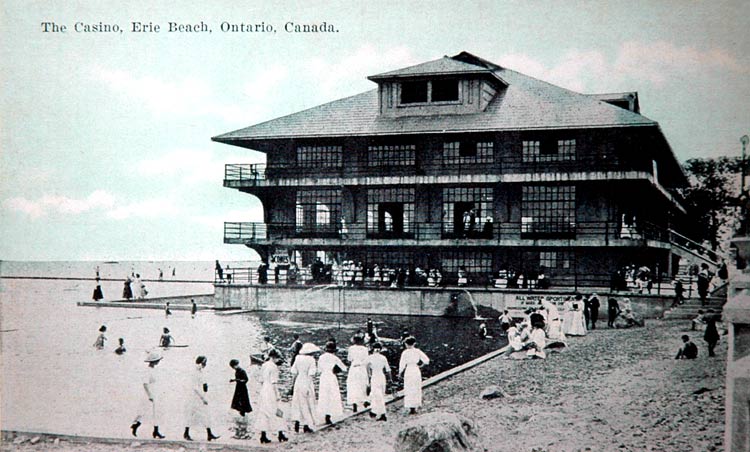
Side view of the casino, showing the early version of the swimming "pool" with a children's section.
Creation of an artificial swimming area with sand "beach" was necessary because, unlike its competitor, Crystal Beach, Erie Beach had no natural sand beach.
In 1911, they also formed the Erie Beach Realty Company and began offering plots of land for sale to Americans for $120 - $400
for 50 x 150 parcels.
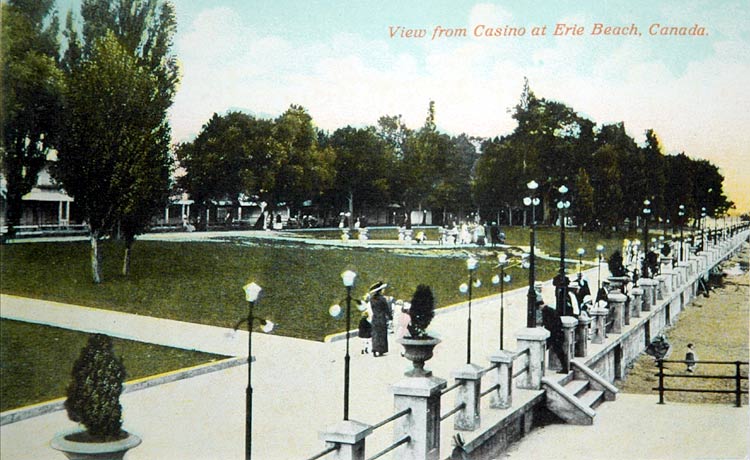
Looking from the Casino along the Promenade toward the ferry pier.
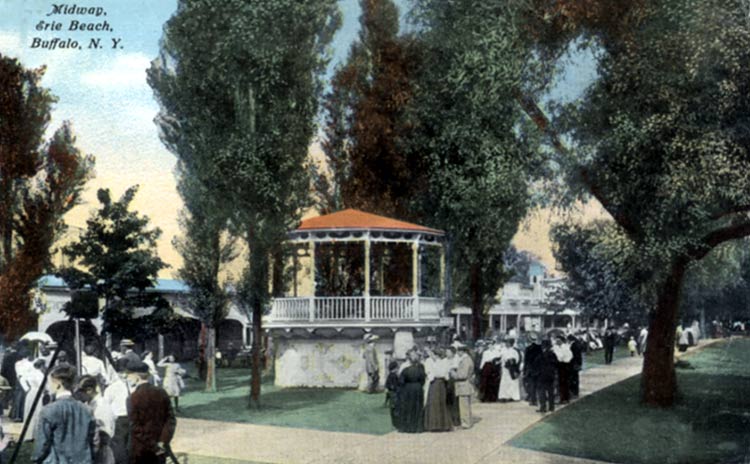
Along the Midway. The bandstand in the center above was utilized for Sunday evening sing-alongs. The songs most often played these evenings were hymns.
A new owner brought a fresh infusion of cash and Bardol made improvements aimed at increasing visits by Buffalonians as well as Canadians.
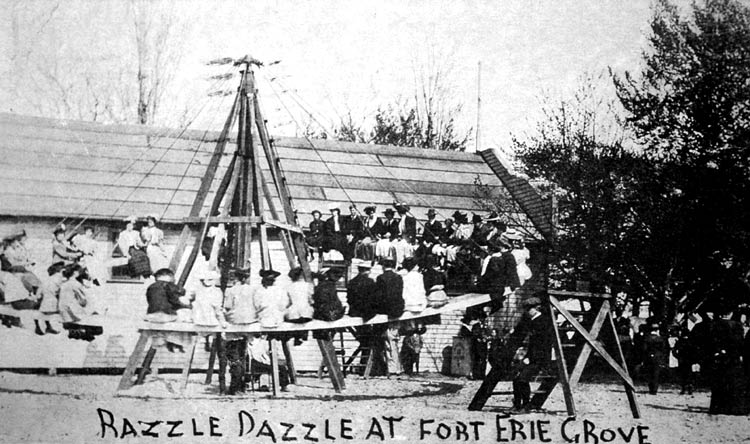
One of the early rides at Erie Beach, the Razzle Dazzle was a simple mechanism whose large wheel leaned sharply as it rotated, giving couples a socially approved opportunity to cling tightly to one another.
Erie Beach had faced a competitor almost from its inception in nearby Ridgeway from Crystal Beach, which also featured a Razzle Dazzle.
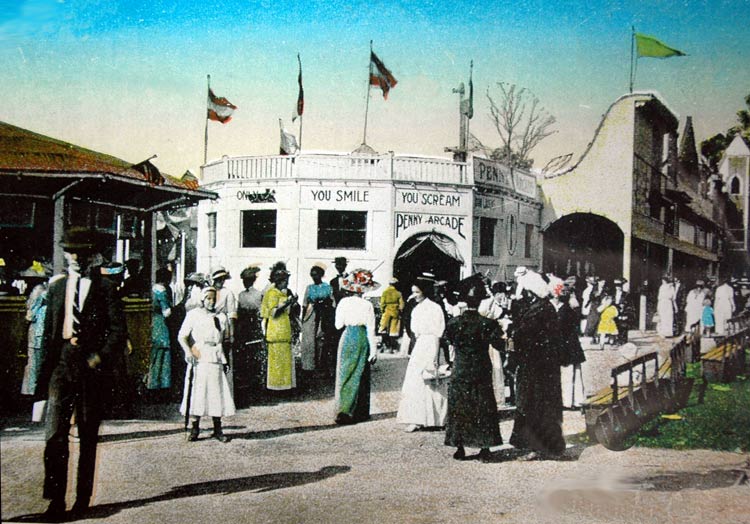
Erie Beach's first 20 years showed a relatively tame Midway to visitors, compared to what was coming. There were pony rides, miniature train, a flying ponies carousel and other family fare.
Crystal Beach could not boast of shaded picnic grounds where the weary worker could rest in bucolic landscapes on his/her one day off because it had no shade trees. Crystal Beach had sand beaches and aggressive owners who were continually working to offer the latest and greatest midway attractions. The rivalry would continue until 1930.
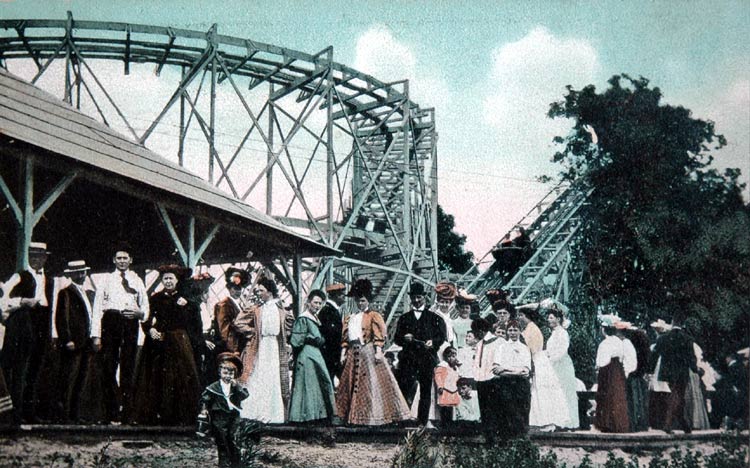
Known as the "Figure Eight," this ride introduced the corseted and buttoned-up generation to the thrills of a roller coaster. It sharpened consumer appetites for bigger thrills and enhanced competition between Erie Beach and Crystal Beach over who could satisfy them.
Concessionaires offered ice cream, popcorn, suckers, root beer, ginger beer, lemonade and orangeade. The food at the hotel was highly rated.
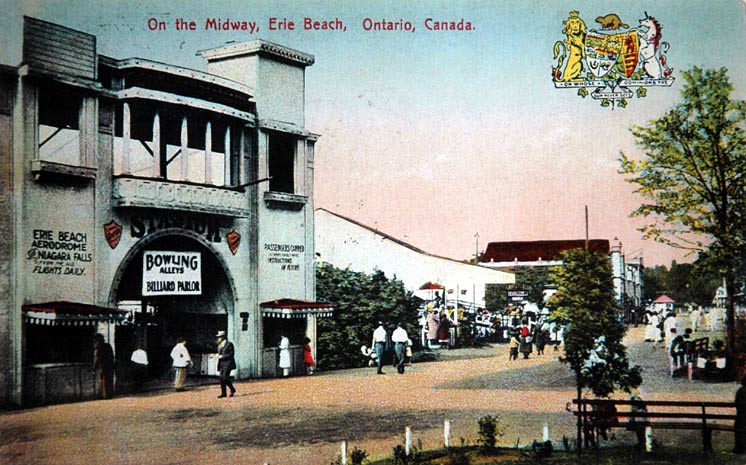
Entrance to the Stadium.
Built to hold 3,500, the stadium provided space for athletic events and performances, trained animal shows, airplane demonstrations in the early years, etc. Admission was charged to enter the stadium aerodrome he built at the Stadium.
Frank Bardol opened an aviation school and promoted airplane trips from the aerodrome he built at the Stadium.
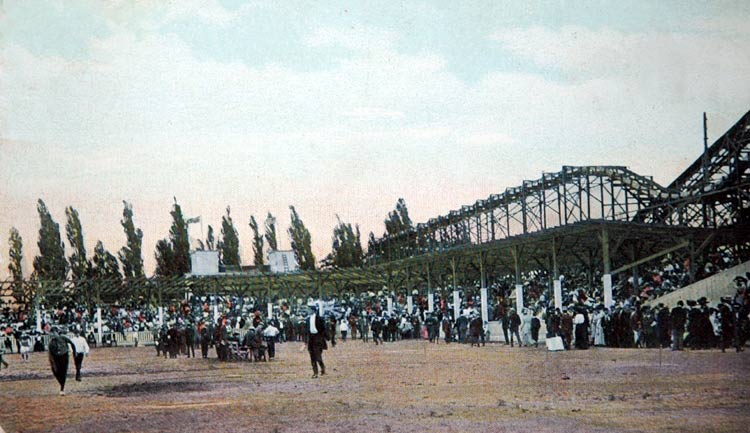
Interior of the stadium during a show. At right is the Scenic Railway ride.
Erie Beach Park proved continuously popular with visitors on both sides of the border, offering big-name band concerts and dancing. The season, which began in May and ended after Labor Day, attracted as many as 20,000 people on weekends. In 1920, with the World War receding into the past and people eager for a good time, there was no reason to doubt that Erie Beach had a bright future.
Grateful thanks to Erin Wilson, Curator of Structural Heritage, Fort Erie Museum; Linda Bleichfeld, collector who generously permitted copying of most of these images; Linda Banas and Barb Goldman for coordinating a site visit and providing spring photos of the Erie Beach Park grounds.
Reference materials include Crystal Beach: The Good Old Days, by Erno Rossi; a detailed website by a coaster enthusiast with many references to rides; Waverly Beach Chronicles, by Debby Cohen; Many Voices: A Collective History of Fort Erie, published by the Fort Erie Museum Board; and newspaper articles from the time.
